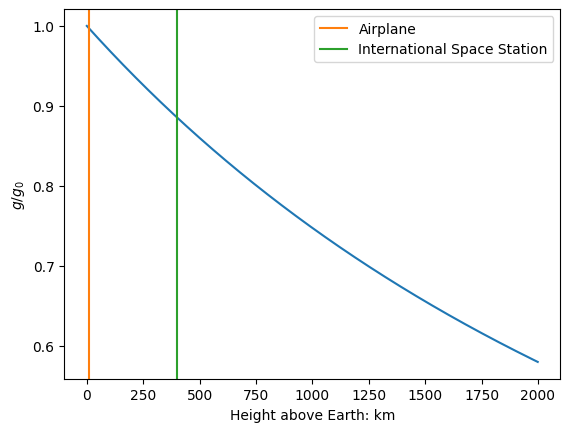Mass, Force, and Newton’s Law of Gravitation#
In Newtonian mechanics, a net force on an object causes the object to accelerate. Forces can be transmitted between objects by direct contact or without contact by a potential field.
Examples of potential fields include:
gravity
magnetism
electricity
All potential fields are generated by a source. As you learned in Physics, the force due to a potential field is inversely proportional to the square of the distance between two sources in the field.
In a gravitational field, the sources are masses. Therefore, the magnitude of the force between two masses is:
where \(m_1\) and \(m_2\) are the two masses, \(r\) is the distance between them, and \(G\) is Newton’s gravitational constant. Eq. (1) is called Newton’s law of gravitation, first published by Isaac Newton in the 1680s [BMW71]. In SI units, \(G\) has the value 6.6742×10-11 m3/(kg s2).
Due to the extremely small size of \(G\), masses either have to be very large or very close together to generate a significant gravitational force.
When one of the masses is much larger than the other, we usually group the larger mass \(M\) with the \(G\) and \(r^2\) terms:
The second term on the right side of (2) is typically called the acceleration due to gravity:
Therefore, the weight of a smaller mass, \(m\), in the gravitational field of a much larger mass is:
For the surface of the Earth, we can plug in \(R_E =\) 6378 km and \(M =\) 5.974×1024 kg to find \(g_0 =\) 9.802 m/s2.
We can also determine the variation of \(g\) with altitude for the Earth. Referenced to the gravity at the surface of the Earth (\(g_0\)), we find:
where \(z\) is the height above the surface of the Earth. This variation is plotted in Fig. 7.

Fig. 7 Variation of \(g/g_0\) with altitude.#
In Fig. 7, you can see that gravity varies significantly with altitude. However, for most normal altitudes, there isn’t much variation. At 10 km, a typical cruise altitude, the value of \(g\) is almost the same as \(g_0\). Even at the height of the ISS (400 km), \(g\) is still 90% of the value of \(g_0\).
Using the value of \(g\) at the ISS, we find that an astronaut still has a weight, \(mg\neq 0\). That is, the force of gravity is still acting on them. However, there is no support under their feet, so they do not feel their weight and we say they are experiencing weightlessness although they are not weightless.